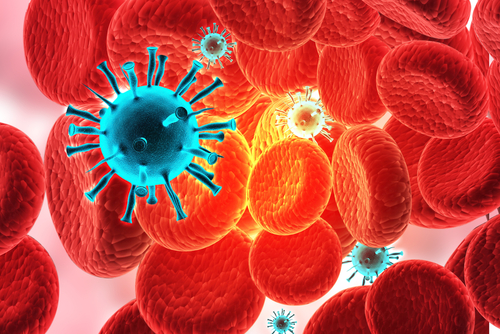By simultaneously inhibiting two proteins that cancer cells need to survive, researchers offer a potentially promising therapeutic approach to treat B-cell lymphomas, according to a new study.
CUDC-907, a new oral dual inhibitor of PI3K and histone deacetylases (HDAC), showed promise in mice models of diffuse large B-cell lymphoma, reducing tumor growth in a dose dependent manner.
The study, “Dual Inhibition of Histone Deacetylases and Phosphoinositide 3-Kinase Enhances Therapeutic Activity Against B-Cell Lymphoma,” appeared in the journal Oncotarget.
The survival and growth of various B-cell lymphomas depends on the cooperative activity between two proteins, PI3K and Myc.
To date, there are no inhibitors of the Myc protein, but previous studies have shown that inhibiting a group of enzymes called histone deacetylase (HDAC) — whose work is to regulate the expression of certain genes — may block the production of Myc.
Researchers decided to investigate the effect of CUDC-907, a new designer drug that simultaneously inhibits PI3K and HDACs, in suppressing lymphoma growth. Results from a Phase 1 trial with this drug had shown positive effects in patients with relapsed/refractory diffuse large B-cell (DLBCL) lymphoma.
Using cultures of different lymphomas, they observed that CUDC-907 treatment successfully halted cancer growth and promoted the death of DLBCL cells.
Further protein analyses showed that CUDC-907 exerted its beneficial effect by decreasing the activation of several proteins that are important for cancer cell survival, such as AKT or 4EBP1, and blocked Myc expression. It also decreased the levels of protein receptors present in B-cells, blocking their signaling pathways and enhancing cell demise.
Importantly, CUDC-907 was also efficient in stopping cancer growth in mice injected with human DLBCL cells.
Taken together, these results suggest that CUDC-907 may become a powerful tool to treat Myc and PI3K-dependent lymphomas in DLBCL patients. The study also provided insight into the drug’s mechanism of action.
“In this study, we demonstrate that CUDC-907, as a single agent, can reproduce the molecular and biologic activity of the two drugs in combination (HDAC inhibitor plus PI3K inhibitor),” the researchers wrote.
“A major advantage of combining HDAC and PI3K inhibitors in a single scaffold is the simplicity and ease of administration, likely resulting in improved patients’ compliance,” they added.
But the researchers warned that the downside of this treatment is that “it is not possible to adjust the dose of each component separately to improve treatment efficacy or to decrease drug-related toxicity.”


